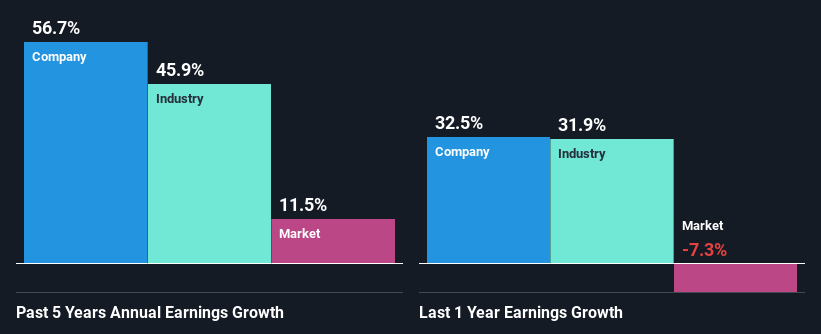XMH Holdings Ltd.'s (SGX:BQF) Stock Is Going Strong: Have Financials A Role To Play?
Most readers would already be aware that XMH Holdings' (SGX:BQF) stock increased significantly by 64% over the past month. As most would know, fundamentals are what usually guide market price movements over the long-term, so we decided to look at the company's key financial indicators today to determine if they have any role to play in the recent price movement. Specifically, we decided to study XMH Holdings' ROE in this article.
Return on equity or ROE is an important factor to be considered by a shareholder because it tells them how effectively their capital is being reinvested. In other words, it is a profitability ratio which measures the rate of return on the capital provided by the company's shareholders.
See our latest analysis for XMH Holdings
How Do You Calculate Return On Equity?
The formula for return on equity is:
Return on Equity = Net Profit (from continuing operations) ÷ Shareholders' Equity
So, based on the above formula, the ROE for XMH Holdings is:
8.0% = S$4.0m ÷ S$50m (Based on the trailing twelve months to April 2023).
The 'return' is the profit over the last twelve months. So, this means that for every SGD1 of its shareholder's investments, the company generates a profit of SGD0.08.
What Has ROE Got To Do With Earnings Growth?
Thus far, we have learned that ROE measures how efficiently a company is generating its profits. Depending on how much of these profits the company reinvests or "retains", and how effectively it does so, we are then able to assess a company’s earnings growth potential. Assuming all else is equal, companies that have both a higher return on equity and higher profit retention are usually the ones that have a higher growth rate when compared to companies that don't have the same features.
XMH Holdings' Earnings Growth And 8.0% ROE
On the face of it, XMH Holdings' ROE is not much to talk about. However, given that the company's ROE is similar to the average industry ROE of 7.9%, we may spare it some thought. Moreover, we are quite pleased to see that XMH Holdings' net income grew significantly at a rate of 57% over the last five years. Considering the moderately low ROE, it is quite possible that there might be some other aspects that are positively influencing the company's earnings growth. For example, it is possible that the company's management has made some good strategic decisions, or that the company has a low payout ratio.
As a next step, we compared XMH Holdings' net income growth with the industry, and pleasingly, we found that the growth seen by the company is higher than the average industry growth of 46%.
Earnings growth is an important metric to consider when valuing a stock. It’s important for an investor to know whether the market has priced in the company's expected earnings growth (or decline). This then helps them determine if the stock is placed for a bright or bleak future. One good indicator of expected earnings growth is the P/E ratio which determines the price the market is willing to pay for a stock based on its earnings prospects. So, you may want to check if XMH Holdings is trading on a high P/E or a low P/E, relative to its industry.
Is XMH Holdings Making Efficient Use Of Its Profits?
XMH Holdings' three-year median payout ratio to shareholders is 9.1%, which is quite low. This implies that the company is retaining 91% of its profits. So it looks like XMH Holdings is reinvesting profits heavily to grow its business, which shows in its earnings growth.
Additionally, XMH Holdings has paid dividends over a period of at least ten years which means that the company is pretty serious about sharing its profits with shareholders.
Conclusion
Overall, we feel that XMH Holdings certainly does have some positive factors to consider. With a high rate of reinvestment, albeit at a low ROE, the company has managed to see a considerable growth in its earnings. While we won't completely dismiss the company, what we would do, is try to ascertain how risky the business is to make a more informed decision around the company. Our risks dashboard would have the 3 risks we have identified for XMH Holdings.
Have feedback on this article? Concerned about the content? Get in touch with us directly. Alternatively, email editorial-team (at) simplywallst.com.
This article by Simply Wall St is general in nature. We provide commentary based on historical data and analyst forecasts only using an unbiased methodology and our articles are not intended to be financial advice. It does not constitute a recommendation to buy or sell any stock, and does not take account of your objectives, or your financial situation. We aim to bring you long-term focused analysis driven by fundamental data. Note that our analysis may not factor in the latest price-sensitive company announcements or qualitative material. Simply Wall St has no position in any stocks mentioned.

 Yahoo Finance
Yahoo Finance 
